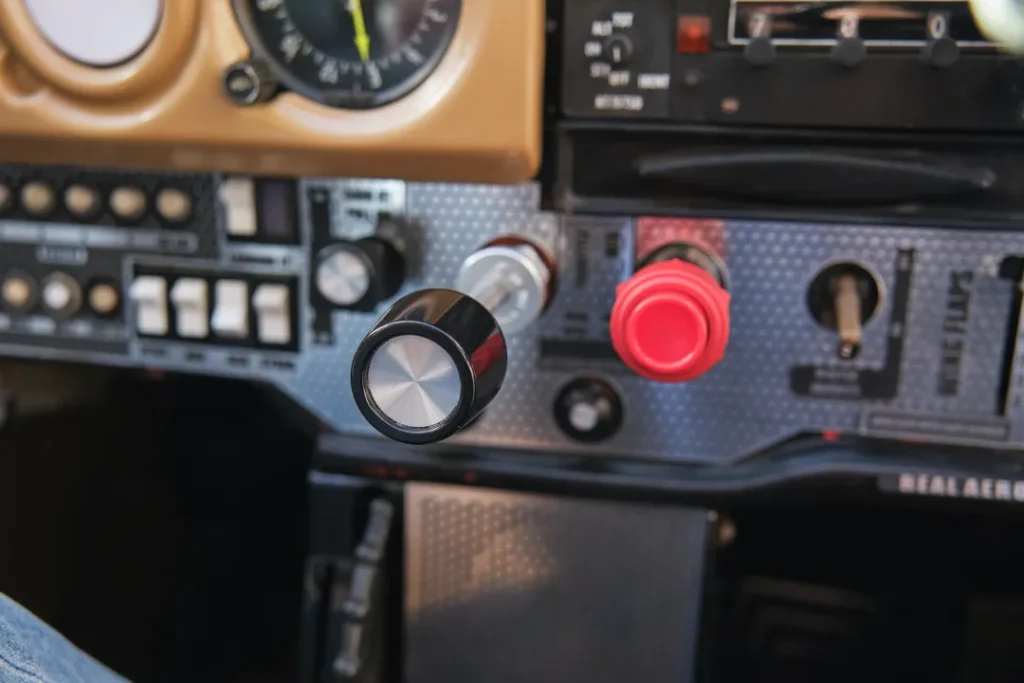Cross-country flight planning is an integral part of successful flying. With this comprehensive guide, we want to help you have a safe and enjoyable flying experience. We will provide you with detailed steps to plan your cross-country flight properly.
This includes looking at the weather, choosing the best route, preparing for communication and navigation, filing a flight plan, and being aware of emergency procedures. We want to ensure that all these steps are taken care of so you can have an easy journey!
So strap in, power up, and take off! With the help of our guide, you will be able to plan a successful cross-country flight.
Pre-flight Considerations
Before embarking on a cross-country flight, several crucial pre-flight considerations must be addressed:
1. Weather Analysis
Weather plays a pivotal role in flight safety. Analyzing current and forecasted weather conditions along your intended route is essential. This analysis should include temperature, wind speed and direction, precipitation, cloud cover, and significant weather phenomena like thunderstorms or fog.
It’s important to check Notices to Airmen (NOTAMs) before any cross-country flight. NOTAMs provide information about airspace closures, navigation hazards, or other potential danger zones that pilots should be aware of. Pilots should always check the most recent NOTAMs for their intended route to ensure they can operate safely and legally in the area.
2. Visual Flight Rules (VFR)
Pilots must be familiar with the rules, regulations, and procedures for visual flight. This includes knowing the proper altitudes to fly at different types of terrain, communicating with air traffic control (ATC), and jetting out an updated flight plan to ATC before take-off.
3. Route Selection
Choosing the optimal route is vital to a successful cross-country flight. Consider factors such as airspace restrictions, terrain, navigation aids, and the availability of suitable airports for refueling or alternate landing options.
4. Navigation and Communication
Ensure your aircraft is equipped with reliable navigation and communication systems. Familiarize yourself with the route waypoints, radio frequencies, and communication protocols for air traffic control and other relevant authorities.
5. Flight Plan Filing
File a flight plan with the appropriate authorities, providing details such as your airport of departure and destination airport, estimated time en route, cruising altitude, and emergency contact information. This step ensures that relevant authorities are aware of your flight and can initiate necessary search and rescue procedures in an emergency.

In-Flight Procedures
Once you’ve completed the pre-flight considerations, it’s time to focus on in-flight procedures to ensure a smooth and safe journey:
1. Navigation Techniques
During the flight, employ various navigation techniques to stay on course. This may include pilotage (visual landmarks), dead reckoning (estimated position based on heading and airspeed), and using navigation aids such as VOR (VHF Omni-directional Range) and GPS (Global Positioning System) systems.
2. Communications
Maintain regular communication with air traffic control and other relevant authorities as required. This includes reporting position updates, requesting weather updates, and obtaining clearances for airspace transitions.
3. Fuel Management
Monitor fuel consumption and ensure sufficient fuel reserves to complete the planned journey. Account for any unexpected diversions or delays that may require additional fuel.
4. Emergency Procedures
Familiarize yourself with emergency procedures specific to your aircraft. This includes understanding how to handle engine failures, loss of communication/navigation systems, and executing emergency landings if necessary. Regularly review and practice these procedures to ensure a quick and effective response in an emergency.

After-Flight Considerations
When you land, your cross-country flight isn’t over yet. Take a few moments to review your performance and make any necessary adjustments for future flights:
1. Debrief
Review the flight and document any lessons learned or mistakes made during the journey. This will help you become a better pilot and increase safety on future trips.
2. Post-Flight Checklist
Complete a post-flight checklist to ensure all systems function correctly and all documentation is current. Inspect the aircraft for any damage incurred during the flight, or perform routine maintenance as required by your aircraft’s manufacturer.
3. Logbook Entries
Update your pilot logbook with details of the journey, such as departure/arrival airports, route flown, total time in the air, and any pertinent remarks.
4. Questions
After a successful cross-country flight, there are a few questions you should ask yourself to ensure future flights go as smoothly:
- Did I accurately follow the pre-flight and in-flight procedures? – Was there anything I could have done better?
- What went wrong during the flight, and what can I do to improve next time?
- Did I follow all safety protocols, including communicating with ATC and monitoring fuel levels?
- Are my navigation systems functioning correctly, or do they require maintenance or calibration?
- Were there any unexpected issues or delays that could have been avoided?
- What can I do differently next time for an even smoother journey?
One of the best qualities a pilot can have is the ability to reflect on their experiences and continuously improve their flying skills. With this guide’s help, we hope you can plan a successful cross-country flight and enjoy your journey! Safe skies!
| Pre-flight Considerations | In-Flight Procedures | After-Flight Considerations |
| 1. Weather Analysis | 1. Navigation Techniques | – Did I accurately follow the pre-flight and in-flight procedures? |
| 2. Route Selection | 2. Communications | – What went wrong during the flight, and what can I do to improve next time? |
| 3. Navigation and Communication | 3. Fuel Management | – Did I follow all safety protocols, including communicating with ATC and monitoring fuel levels? |
| 4. Flight Plan Filing | 4. Emergency Procedures | – Are my navigation systems functioning correctly, or do they require maintenance or calibration? |
| – Were there any unexpected issues or delays that could have been avoided? | ||
| – What can I do differently next time for an even smoother journey? |
Conclusion
In conclusion, proper cross-country flight planning is essential for a safe and successful journey. By considering pre-flight factors such as weather analysis, route selection, navigation and communication, and filing a flight plan, you lay the groundwork for a smooth experience. During the flight, focus on navigation techniques, communication, fuel management, and emergency procedures to ensure a secure and efficient flight.
Remember, successful cross-country flight planning involves attention to detail, thorough preparation, and ongoing situational awareness.
By following the guidelines outlined in this comprehensive guide, you’ll be well-equipped to outrank other websites and enjoy a rewarding cross-country flying experience.
So get ready for takeoff! With our guide’s help, you can confidently plan your cross-country flight.
Ready to take your cross-country flying skills to the next level?
Fly Around Alaska provides world-class flight training and pilot certification courses to help you become a certified cross-country pilot. Our experienced certified flight instructors guide you through the entire process, from pre-flight planning and navigation techniques to emergency procedures and fuel management.
We emphasize safety at all times and are dedicated to making sure you have a successful journey. With our comprehensive flight training courses, you can be assured of obtaining the highest standards of knowledge and skill in the aviation industry. Come fly with us today for an unforgettable experience!
Complete the form below or visit our programs page to learn more!
Frequently Asked Questions About Cross-Country Flight Planning
Q: What are the key elements of a cross-country flight plan?
A: Key elements of cross-country flight planning include weather analysis, route selection, navigation, communication, filing a flight plan, navigation techniques, communication with ATC, fuel management, and emergency procedures.
Q: What is the best way to ensure safety during a cross-country flight?
A: The best way to ensure safety during a cross-country flight is to pay close attention to pre-flight considerations such as weather conditions along your intended route, selecting an optimal route that takes into account airspace restrictions and terrain features, familiarizing yourself with reliable navigation systems and communication protocols for air traffic control, and filing a flight plan with the appropriate authorities. During the flight, focus on navigation techniques, communication, fuel management, and emergency procedures to ensure a secure and efficient flight.
Q: Where can I find professional training and certification courses for cross-country flying?
A: Fly Around Alaska provides world-class flight training and pilot certification courses to help you become a certified cross-country pilot.
Our experienced, certified flight instructors guide you through the entire process, from pre-flight planning and navigation techniques to emergency procedures and fuel management. With our comprehensive flight training courses, you can be assured of obtaining the highest standards of knowledge and skill in the aviation industry. Come fly with us today for an unforgettable experience!
Whether you aspire to become a professional commercial pilot, flying high in the skies to destinations far and wide, or simply yearn to take local flights on relaxing weekends, we are here to make your aviation dreams come true.
You can get all the qualifications to become a certified cross-country pilot in just a few hours. Our instructors will help you master the basics of navigation, airspace rules, and aircraft systems.
You will receive comprehensive instruction on proper flight planning and calculation techniques, aerial maneuvers and operations, and in-flight decision-making skills.
Once you’ve completed our courses, you’ll be fully prepared to take the Federal Aviation Administration (FAA) exams and receive your pilot’s license. With a professional-level certification, you can explore the skies confidently and safely.
Our experienced instructors are passionate about aviation and will help guide you through every step, from pre-flight preparation and practice maneuvers to post-flight debriefing. We strive to provide
We hope this guide has provided you with the information and resources to plan a successful cross-country flight.
With the help of our expert tips, we are confident that you will take off on an exciting journey. Safe skies!
